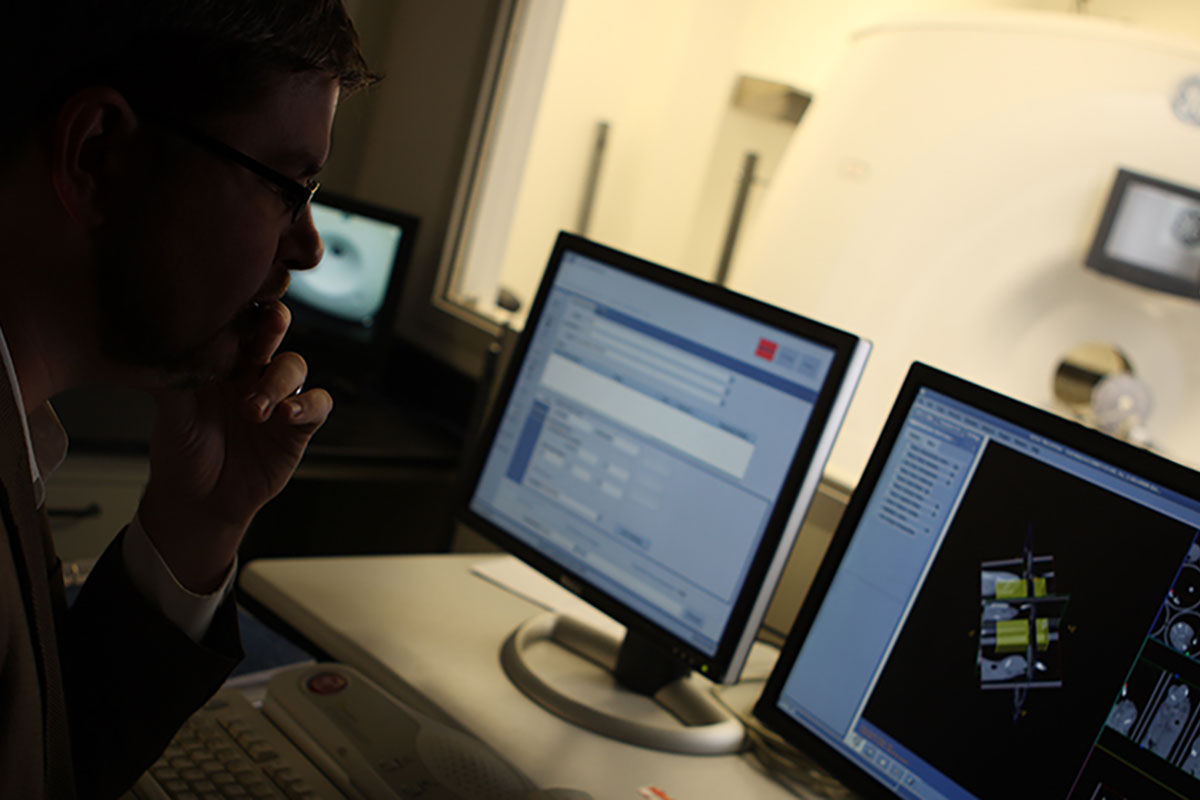CT-based bone and soft tissue imaging
In vivo micro-CT imaging enables high-resolution (to ~50 microns), three-dimensional image generation by rotation of an x-ray source and detector around an imaging subject. Multiple projections are obtained during the rotation and reconstructed to generate the three-dimensional image. The large density differences between bone, soft tissue, and air make them readily distinguished by CT. CT contrast between different soft tissues is generally more subtle. The use of systemically administered, CT contrast agents enables better visualization of the soft tissues, including the vascular system.


